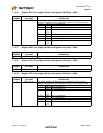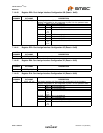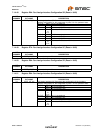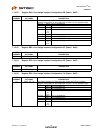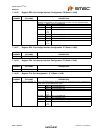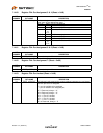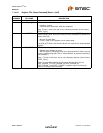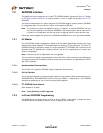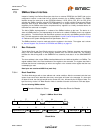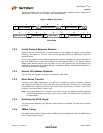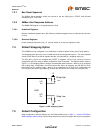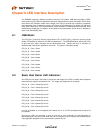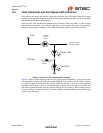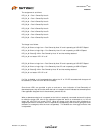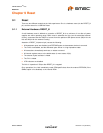
USB MultiSwitch
TM
Hub
Datasheet
Revision 1.91 (08-22-07) 40 SMSC USB2524
DATASHEET
7.2 EEPROM Interface
The SMSC Hub can be configured via a 2-wire (I
2
C) EEPROM (256x8). (please see Table 4.2, "SMBus
or EEPROM Interface Behavior" for specific details on how to enable configuration via an I
2
C
EEPROM).
The Internal state-machine will, (when configured for EEPROM support) read the external EEPROM
for configuration data. The hub will then “attach” to the upstream USB port.
Note: The Hub does not have the capability to write, or “Program”, an external EEPROM. The Hub
only has the capability to read external EEPROMs. The external eeprom will be read (even if
it is blank or non-populated), and the hub will be “configured” with the values that are read.
Please see Internal Register Set (Common to EEPROM and SMBus) for a list of data fields available.
7.2.1 I
2
C Master
The I
2
C EEPROM interface implements a subset of the I
2
C Master Specification (Please refer to the
Philips Semiconductor Standard I
2
C-Bus Specification for details on I
2
C bus protocols). The Hub’s I
2
C
EEPROM interface is designed to attach to a single “dedicated” I
2
C EEPROM, and it conforms to the
Standard-mode I
2
C Specification (100kbit/s transfer rate and 7-bit addressing) for protocol and
electrical compatibility.
Note: Extensions to the I
2
C Specification are not supported.
The Hub acts as the master and generates the serial clock SCL, controls the bus access (determines
which device acts as the transmitter and which device acts as the receiver), and generates the START
and STOP conditions.
7.2.1.1 Implementation Characteristics
The Hub will only access an EEPROM using the Sequential Read Protocol.
7.2.1.2 Pull-Up Resistor
The Circuit board designer is required to place external pull-up resistors (10KΩ recommended) on the
SDA/SMBDATA & SCL/SMBCLK/CFG_SELO lines (per SMBus 1.0 Specification, and EEPROM
manufacturer guidelines) to Vcc in order to assure proper operation.
7.2.1.3 I
2
C EEPROM Slave Address
Slave address is 1010000.
Note: 10-bit addressing is NOT supported.
7.2.2 In-Circuit EEPROM Programming
The EEPROM can be programmed via ATE by pulling RESET_N low (which tri-states the Hub’s
EEPROM interface and allows an external source to program the EEPROM).



